Pickled in sweet vinegar, this daikon and carrot Amazuzuke is perfect for cleansing the palate and enhancing the flavors of your meal. Prep ahead of time and serve it as a side dish or salad to enjoy with your Japanese lunch or dinner!
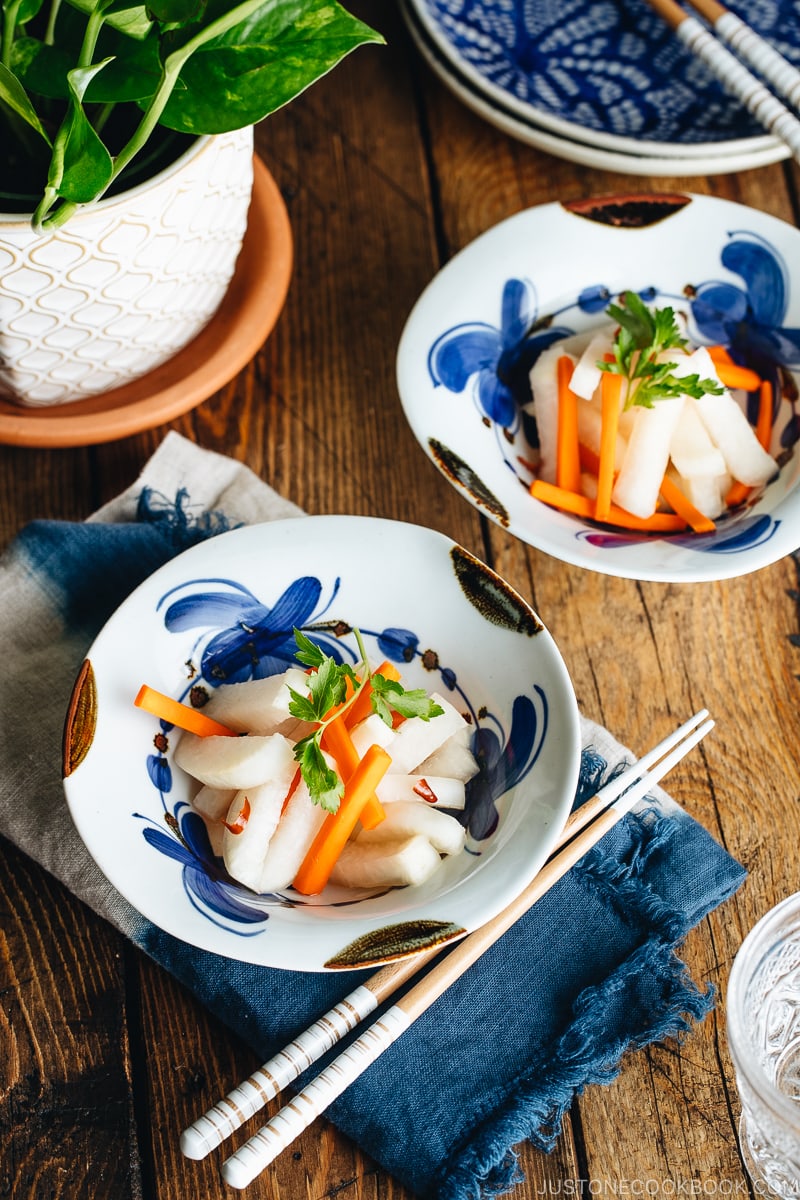
Amazuzuke (甘酢漬け) is a Japanese technique of pickling fresh vegetables in sweet vinegar. You might already familiar with the most well-known example of an Amazuzuke, which is “Gari” or pickled sushi ginger.
Amazu-zuke refers to sugar and rice vinegar (amazu) pickling (zuke). It is one of the very basic Japanese pickles known collectively as tsukemono (漬物). If you’re interested in learning more about different types of tsukemono, read Tsukemono: A Guide to Japanese Pickles on my blog.
Tsukemono is categorized into different types based on the pickling agent:
- Shiozuke (塩漬け) – salt
- Suzuke (酢漬け) – vinegar
- Amazuzuke (甘酢漬け) – sugar and vinegar
- Misozuke (味噌漬け) – miso
- Shoyuzuke (醤油漬け) – soy sauce
- Kasuzuke (粕漬け) – sake kasu (lees)
- Shiokojizuke (塩麹) – rice koji/mold-cultured rice
- Nukazuke (糠漬け) – nuka (rice bran)
- Karashizuke (からし漬け) – Japanese hot mustard karashi
- Satozuke (砂糖漬け) – sugar
I’m working on the Tsukemono series on Just One Cookbook, and today we will focus on Amazuzuke.
In the recipe below, I’ll show you how to make Amazuzuke with daikon and carrot. It’s so ridiculously easy that any beginner cook can get a grip on. Ready to turn your vegetables into great tasting accompaniments that guarantee to add brightness to your everyday meal? Let’s do this!
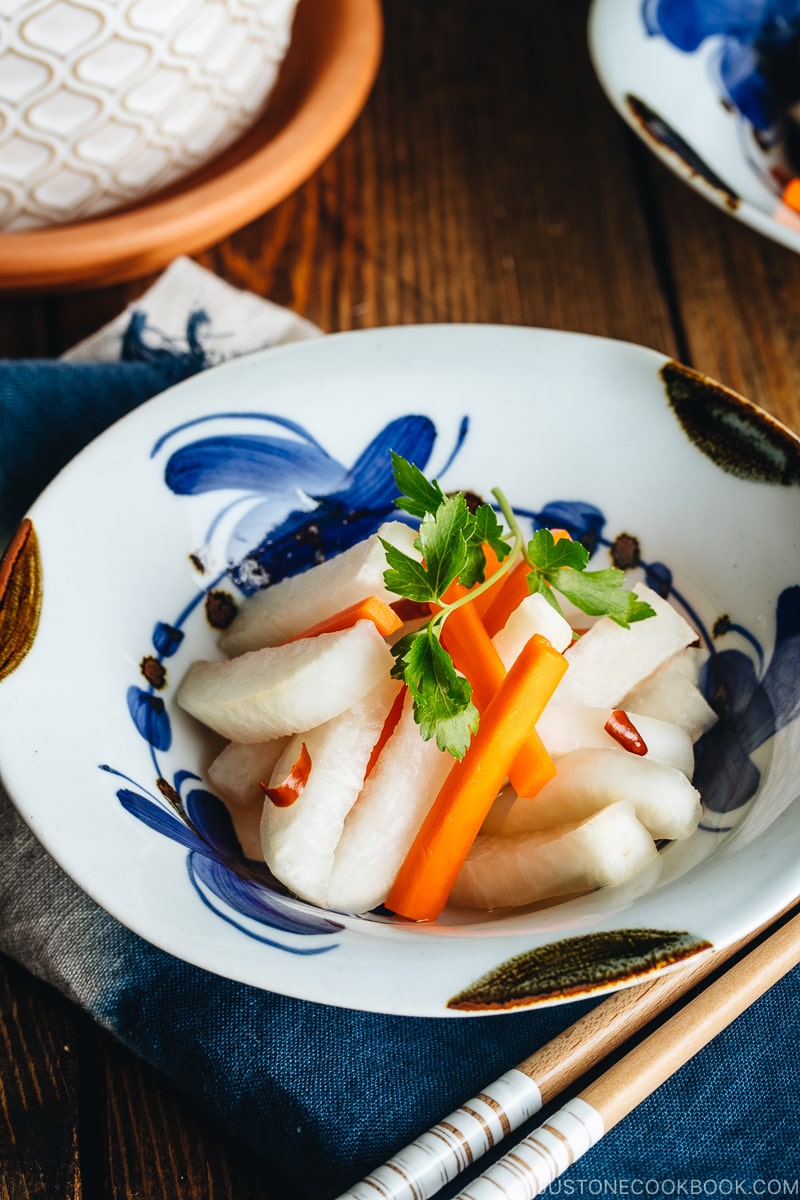
3 Easy Steps to Make Daikon Amazuzuke
1. Prepare Your Ingredient
For Amazuzuke, the most commonly used vegetables are young ginger, daikon radish, radish, and turnip (kabu). Young ginger is only available in the summer while daikon, radish, and turnips are in season during winter months. They are all root vegetables and the texture and flavor improve with pickling or cooking.
Before pickling, you will need to withdraw moisture out of the vegetables so that they retain their crunch and character.
Other ingredients you can also use for this method of pickling:
- bell pepper
- carrot
- celery
- cucumber
- lotus root
But remember, adjust the pickling time as each vegetable is different.
2. Make Amazu (Sweet Vinegar)
All you need is just 3 ingredients for the pickling solution: rice vinegar, sugar, and salt. Put all the ingredients in a saucepan to meld and let cool completely. You can keep the finished Amazu for 2-3 months in the refrigerator, and use it in batches.
Do you need to use rice vinegar? Ideally, yes. The taste of rice vinegar is much milder and easier to consume than other types of vinegar, and because of that, you can use less sugar. If you use another type of vinegar, please adjust the amount of sugar. The rice vinegar makes this pickle more “Japanese” style pickle.
3. Pickle Time!
Combine the vegetables and Amazu and in several minutes (or few hours, if you prefer), they are ready to enjoy!
How simple is that? Let’s make a batch of the Amazu today and transform your vegetables into delicious sweet tangy bites that can wake up your appetite!
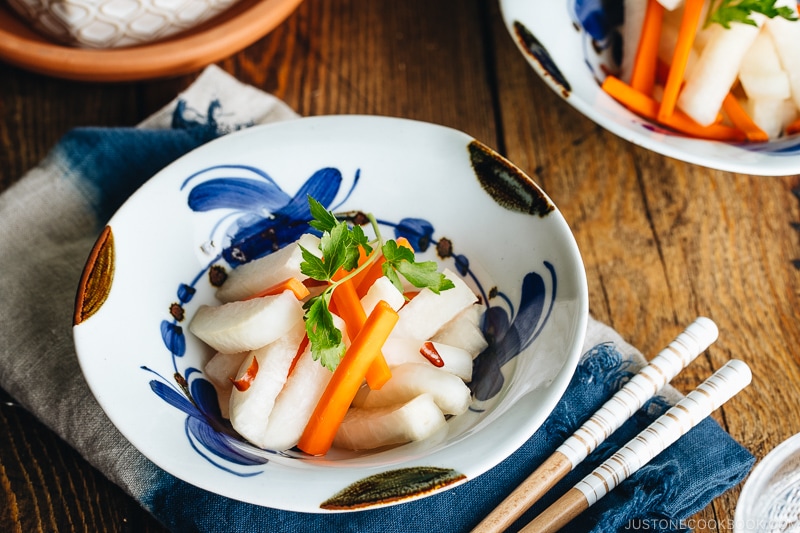
Wish to learn more about Japanese cooking? Sign up for our free newsletter to receive cooking tips & recipe updates! And stay in touch with me on Facebook, Pinterest, YouTube, and Instagram.
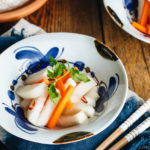
Amazuzuke (Sweet Vinegar Pickling)
Ingredients
- 8 oz daikon radish (you can substitute with regular radish and turnips cut into thin wedges)
- 3 oz carrot
- 1 tsp Diamond Crystal kosher salt
- 1 dried red chili pepper
- ½ lemon
For the Amazu
- 1 cup rice vinegar (unseasoned)
- ½ cup sugar
- 1 tsp Diamond Crystal kosher salt (I recommend using 2 tsp for summertime to replenish the salt in the body)
Instructions
- Before You Start…Please note that this recipe requires 30 minutes of pickling/marinating time. Gather all the ingredients.
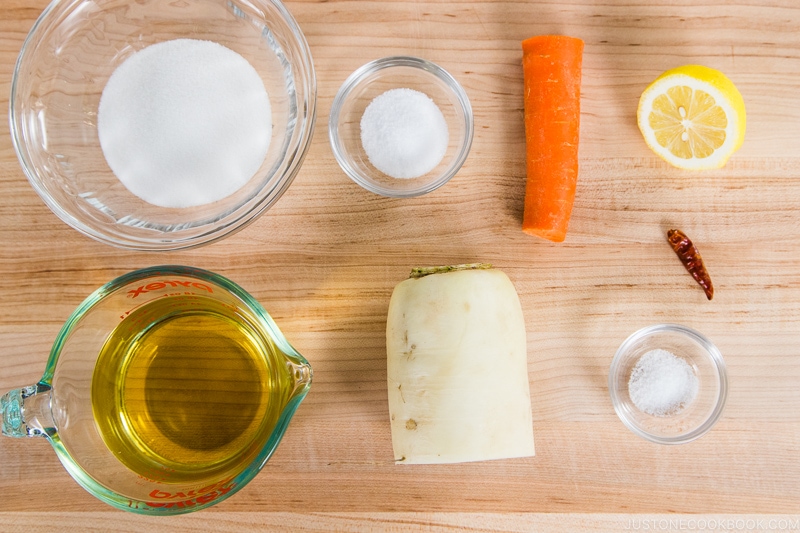
To Prepare the Amazu (Sweet Vinegar Pickling Liquid)
- In a small saucepan, combine 1 cup rice vinegar (unseasoned), ½ cup sugar, and 1 tsp Diamond Crystal kosher salt. Whisk well to combine over medium heat. Once boiling, turn off the heat. Let cool to room temperature.

- Once the amazu is cool, transfer to a mason jar or an airtight container. You can keep amazu in the refrigerator for up to 2–3 months.
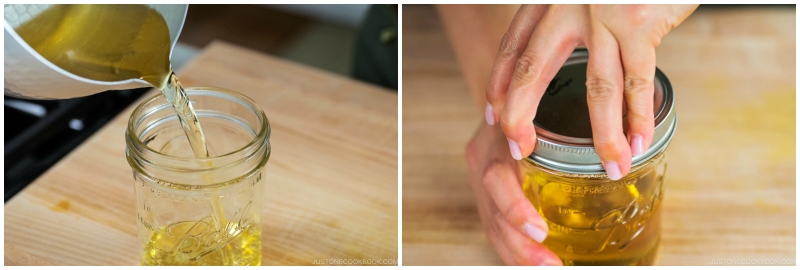
To Prepare the Vegetables
- Peel 8 oz daikon radish and cut it into ¼-inch (6-mm) slabs and then into sticks.

- Peel 3 oz carrot, cut into thin slabs, and then cut into thin strips.

- Put the daikon and carrot in the plastic bag and add 1 tsp Diamond Crystal kosher salt.
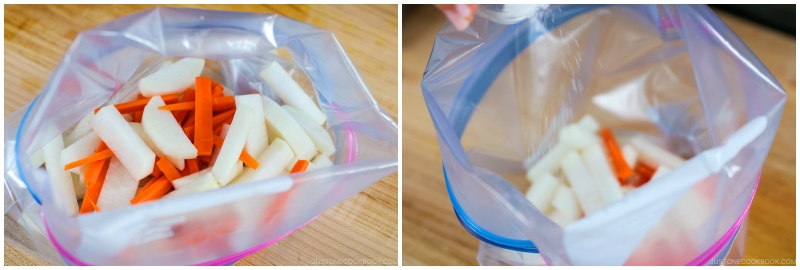
- Close the bag and rub the vegetables from outside the bag for 1 minute and set aside for 15 minutes. Open the bag and drain completely the liquid that the vegetables released.

To Make the Amazuzuke
- Add ¼ cup Amazu into the bag and combine with the vegetables.
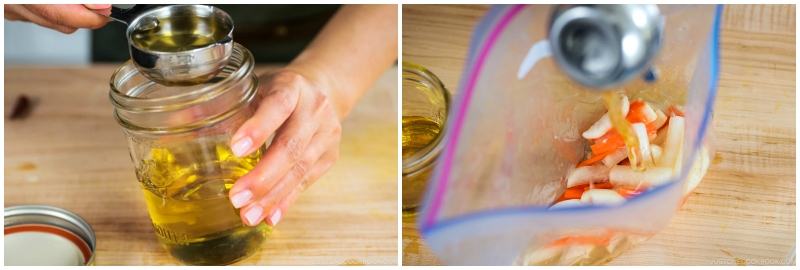
- Cut 1 dried red chili pepper into rounds and remove the seeds (if you don’t want it to be too spicy). Add the red chili pepper rounds to the bag.
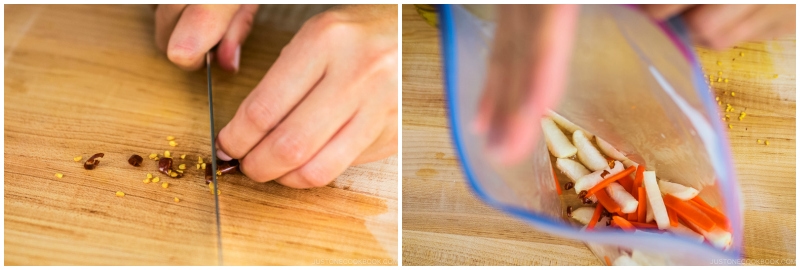
- Squeeze the juice from ½ lemon into the bag and rub the vegetables from outside the bag.
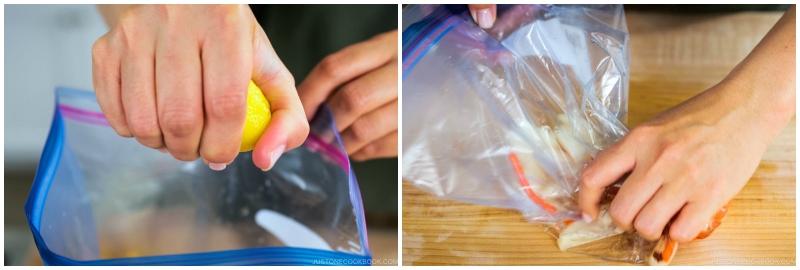
- Set aside for 15 minutes (or a few hours, if you prefer) to marinate the vegetables. Serve the Amazuzuke in a bowl.
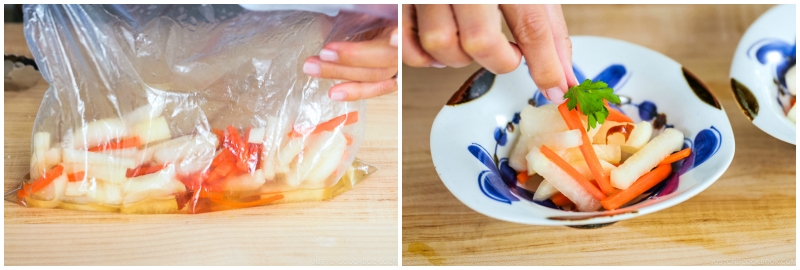
To Store
- You can keep the bag in the refrigerator for up to 3 days. To minimize the odor, you can store it in a jar or container with a tightly sealing lid.
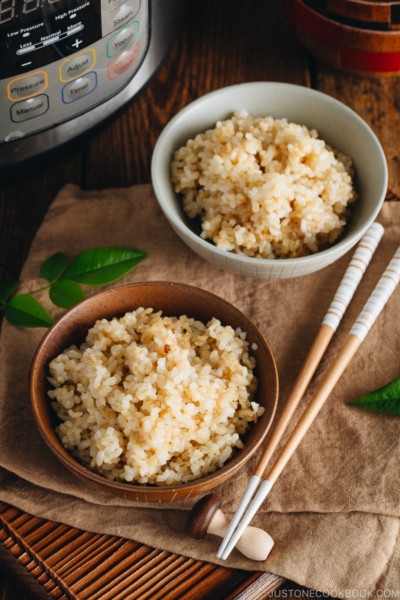
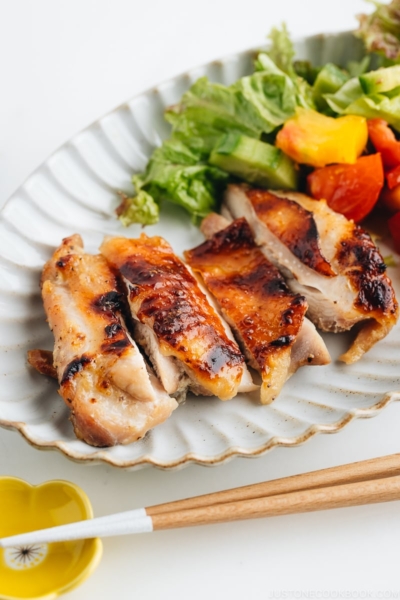
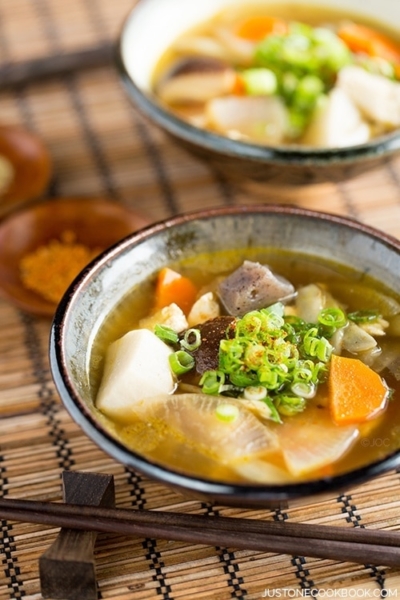
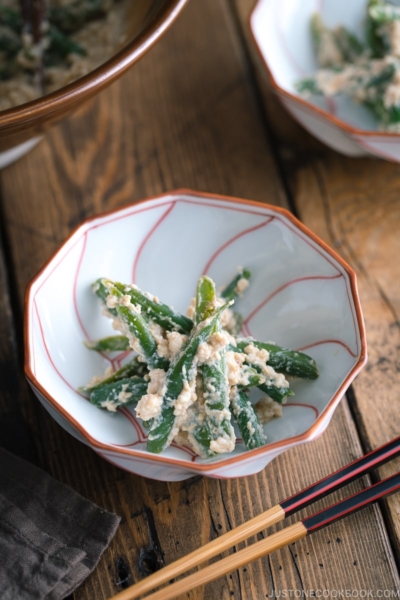




Hi! I want to try this recipe, but can I leave the veggies in a jar with the solution? Can it last more than 3 days? 1 week?
Hello, Martine! Thank you for trying Nami’s recipe!
Yes. You may store it in a jar with the solution for up to 3 days, but please keep it in the refrigerator.
We hope this helps!
Hi Nami! I use your recipes all the time, I lived in japan many years and it’s nice to have such authentic recipes with explanations.. I have a question:
I want to use fresh lotus root for this. How long should I adjust pickling times?
Also, I usually have “seasoned” rice vinegar on-hand because I make sushi rice often. Is it ok to use this instead of unseasoned?
Hi Taro, Thank you for taking the time to read Nami’s post!
Nami and all of us at JOC are so happy to hear that you enjoy many of Nami’s recipes.
If using fresh lotus root, we recommend first boiling the sliced lotus root for about 2 minutes before mixing it with Amazu. The pickling time will be the same as in this recipe or longer to your taste.
As for rice vinegar, seasoned rice vinegar contains sugar and salt, so we recommend adjusting the sugar and salt amount in the recipe to your taste.
We hope this help!
Hello Nami! I’m hoping to keep some pickled vege in my fridge so i can reach for them whenever I want. The recipe calls for 1/4 cup for the amount of vege but I realized when I put them into a pickling jar (mason or Le Parfait), there’s not much to cover the vege. Should and can I just use the entire recipe of pickling liquid for the same amount of vege in this recipe, and add on more vege along the way to reuse the liquid? Or that’s not a good method? Any recommendations on how to make a batch and store? Thank you!
Hi Peky! Thank you for trying Nami’s recipe!
Yes, you can use entire Amazu for the veggie, but we don’t recommend reusing the liquid for many days because the veggie release the liquid, and Amazu will be diluted. You can reheat it and reuse for a week or use it as a condiment for other dishes.
How about placing the veggie in the shallow glass food storage container instead of the tall jar? You can probably need less liquid than a tall jar.
We hope this helps!
I love your website, recipes and emails but the constant movie ads here are such a distraction that they have become offensive. It wouldn’t be so bad if the little x that should kill the ad actually worked, instead of either restarting the ad or queueing up another. This is an increasing problem with your website and so many others.
Hi Laurel! Thank you so much for your kind words about my site and newsletters. We are constantly using our site as well, and we do use less amount of ads compared to other food blogs (because I do understand how annoying it can be). The little x button works for us (we tested multiple browsers). Could you let us know the device and browser you’re using (email us at hello @ justonecookbook .com), and we’ll investigate this. We work closely with the ad publisher company which deals with our ads on the site.
Hello! I made this some time ago and it was very good with. I was wondering what you think if I replace the sugar with monk fruit, if it will still be tsukemono amazuzuke
Hi James! Thank you very much for reading Nami’s post and trying her recipe!
We have never tried this recipe with Monk fruit and are not sure how the outcome will be. We think it should work but if you try it, let us know how it goes!
Hi Nami, do you mean I can keep the vegetables with the amazuzuke in the bag for up to 3 days, or I have to remove the vegetables after a few hours and then they can be kept for up to 3 days? Thanks!
Hi Ali, Thank you very much for trying Nami’s recipe!
Please keep the vegetables with the Amazu in a bag. We will add the note to this post soon. Thank you!🙂
i love all types of pickles and these were great! refreshing and nice to have as an additional side to a meal. will definitely make again.
Hi Nikki!
Thank you very much for your kind feedback!
Hi Nami, would this work with cabbage?
Hi Tash! Yes I think so! 🙂
Hi, can I re-use the Amazu for another batch of pickling? It seems like such a waste.
Hi Sam! We don’t use this leftover for the same dish because it’s been diluted from the moisture of the vegetables. We can use it for other dishes if you prefer.
I love your recipes, thank you!
I often see sweet pickled garlic cloves served alongside sashimi or chirashi. Do you have a recipe for that?
Hi Jean! Thank you! The garlic next to sashimi or chirashi? Do you mean the ginger?
Here’s the sushi ginger recipe: https://www.justonecookbook.com/pickled-ginger/
Hope you like it! 🙂
I added extra sugar because very sour, but a great pickling recipe as I’m learning about the Japanese culture and to cook Japanese foods for my Wife
I really enjoy your recipes. I shall definitely try your sweet vinegar pickling method especially as I usually have a surplus from my veggie patch. Maybe not this year with the mega drought Down Under. Thanks.
Hi Dana! Thank you for your kind words about my recipes. Awe, I’m sorry to hear about the drought. California is pretty dry too… 🙁
I like it. It’s spicy and delicious. Thank you !!! Do you have recipes how to marinade ginger?
Hi Gali! Thank you so much! Yes, it’s here: https://www.justonecookbook.com/pickled-ginger/
I love your recipes. Enjoying seeing the beautiful pottery!
Thank you, Theresa!